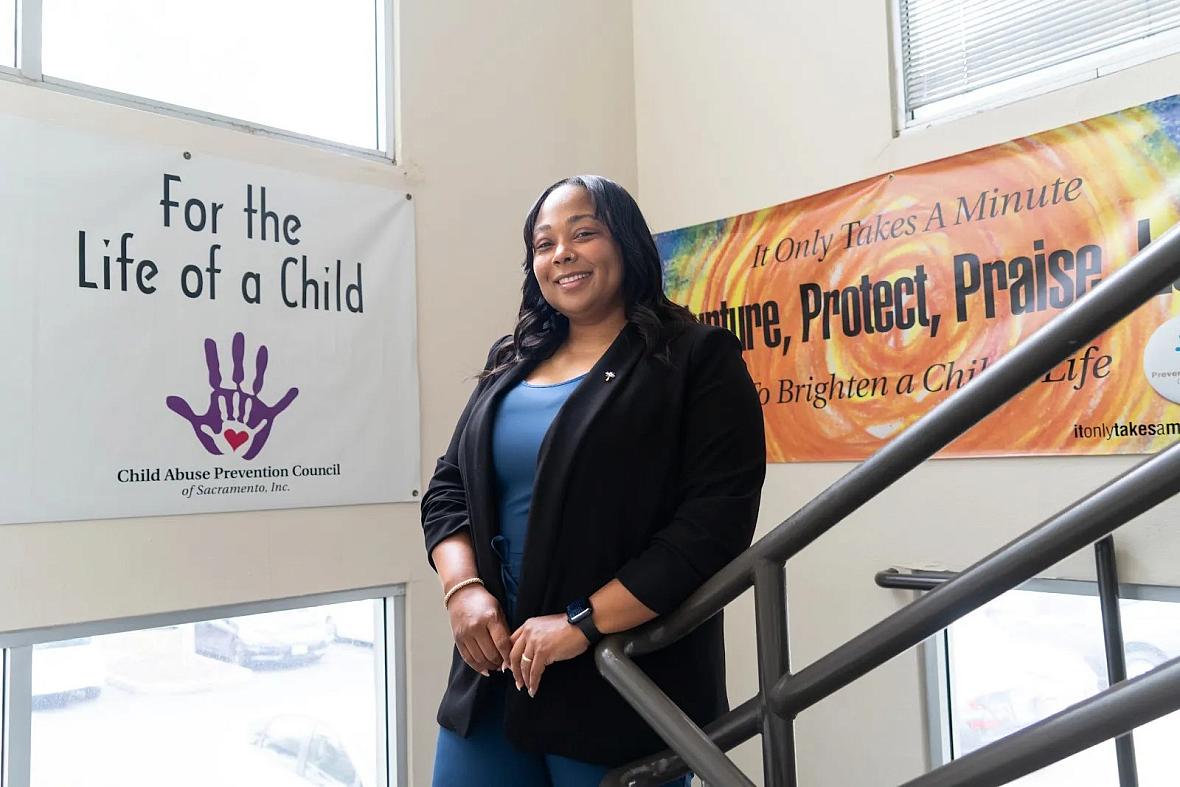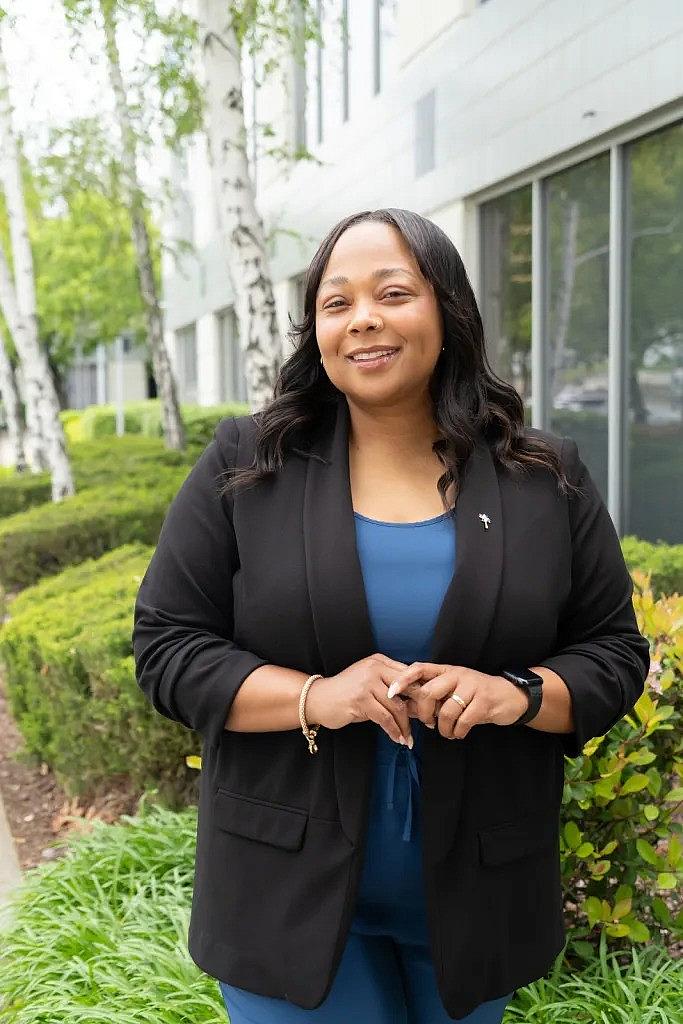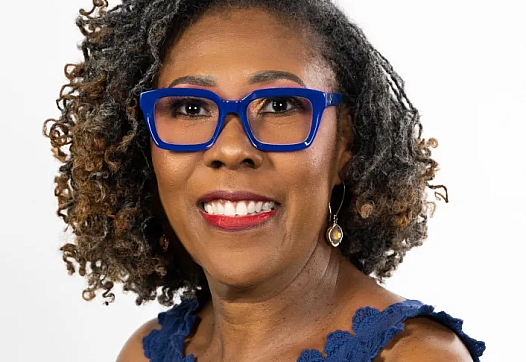Sacramento Leader Janay Eustace Works To Transform Child Welfare System
The story was originally published by the Observer with support from our 2025 Child Welfare Impact Reporting Fund.

Early involvement with the local child welfare system left Janay Eustace feeling like a criminal. That interaction fueled a care in social work and has given her insight into helping Black families navigate the system. She now leads the Sacramento Child Abuse Prevention Center.
Roberta Alvarado, OBSERVER
Like most teenage girls, Janay Eustace was thrilled to be turning 15 and approached the milestone with great anticipation.
Then the police showed up at her school and everything changed.
Two decades later, Eustace’s story is a compelling narrative of transformation, resilience, and an unyielding dedication to systemic change. As the current president and CEO of the Child Abuse Prevention Center (CAP), Eustace brings not only professional expertise but a profound personal understanding of the child welfare system’s complexities, especially its impact on the Black community. Her journey, marked by direct involvement as a foster youth, informs her mission to create a more equitable and culturally competent system.
Eustace’s memories of entering the foster care system remain vivid. She and her sister, who was 5 at the time, were taken from school by law enforcement and placed into a social worker’s vehicle, without any prior notification to their mother. Her mother struggled with substance abuse, but didn’t immediately come to the attention of Child Protection Services (CPS). It was the early 2000s, though, so when she did, automatic removal was the regular policy.
The shock and confusion of being taken from school were compounded when Eustace arrived at the Children’s Receiving Home.
“I literally saw at least six to seven people from my neighborhood,” she says.
Eustace later learned that this wasn’t an isolated incident, but a pattern that revealed a deeper, systemic issue. Apartment managers in her neighborhood were frequently contacting CPS on Black families during evictions. Combined with probation and parole sweeps in the area around Arden Fair and North Sacramento, a landscape emerged where child welfare was, in her words, “weaponized against Black families.”
Trauma-Informed Service
What was happening in her neighborhood stemmed from a response to past child deaths associated with substance use.
“The pendulum had swung in the county where there had been some deaths of children whose parents were substance users, and so automatically, if you had any of those factors, it was just a red flag to the system,” Eustace says.
That system wasn’t today’s system, she says.
“When I entered foster care, Sacramento County was the second largest county in the state to have kids in foster care, only behind Los Angeles.”
Black families in certain ZIP codes faced heightened scrutiny and a higher likelihood of intervention. While the concern for child safety may have been genuine, the response was broad and often indiscriminate, disproportionately affecting Black families already facing economic and social challenges.
Despite the trauma of being taken from their mother, Eustace and her younger sister were fortunate to have a relative step in. Their grandmother was a licensed foster parent, enabling them to be placed in kinship care within a day.
However, the initial delay and experience at the Receiving Home were distressing. Eustace recalls the separation from her younger sister, who was medically fragile, and the feeling of being treated as if she were “being arrested.”
“It was the most unsafe I ever felt in my life,” Eustace says.
Eustace eventually “emancipated,” or aged out of the system, at 18, though her family’s case continued. Her journey through the system became an awakening. Seeing neighbors at the Receiving Home, noting inaccuracies in court reports and experiencing firsthand the system’s failures ignited a passion for change. Her path to advocacy began with Independent Living Program classes and the California Youth Connection (CYC), a youth-led advocacy group. Through CYC, Eustace learned about foster youth rights, engaged in Sacramento County’s early child welfare reform initiatives, and met Sheila Boxley, the former leader of the Child Abuse Prevention Center, a connection that would eventually lead to her current leadership role.
Eustace’s life has been guided by the principle that “children deserve their families, and families deserve their children.” It fueled her decision to pursue a master’s of social work from Sacramento State in 2009, aiming to understand the system from the inside and drive change at a legislative and administrative level.



